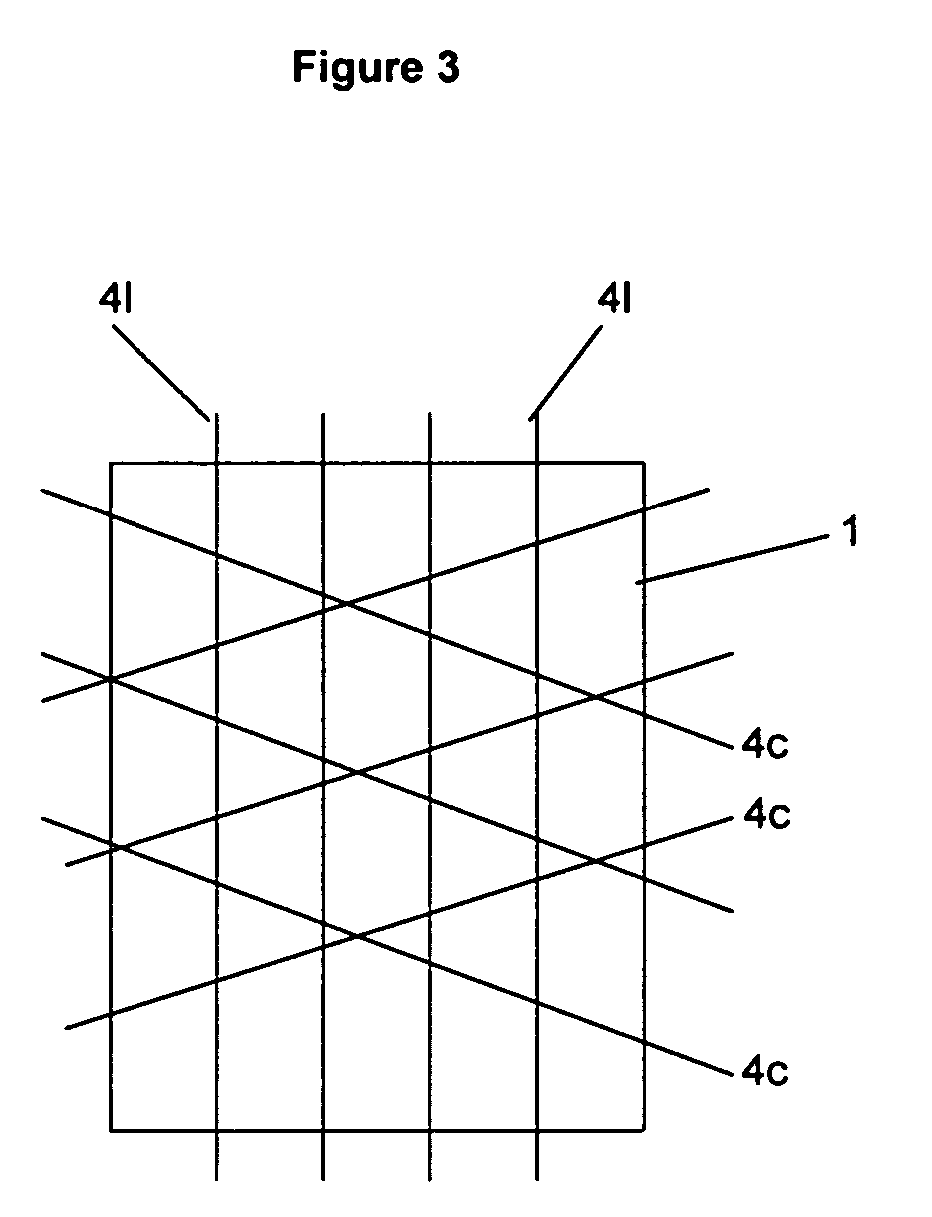Prepregs for use in building lay-ups of composite materials and processes for their preparation
a technology of composite materials and prefabricated materials, applied in the field of prefabricated materials, can solve the problems of reducing mechanical properties, affecting the handling of materials, and affecting the quality of materials, so as to reduce the level of laminate voids and improve mechanical properties
- Summary
- Abstract
- Description
- Claims
- Application Information
AI Technical Summary
Benefits of technology
Problems solved by technology
Method used
Image
Examples
experiment a
[0036] Alternate plies of carbon prepregs with a resin content of 40% and 24% by weight, each with 150 g / m2 carbon UD fibers were put one on top of the other (50 layers of each kind of prepreg, in total therefore 100 layers) to form a lay-up. The matrix resin type was M9.6 available from Hexcel, Pasching, Austria and the fiber type was T600S available from Soficar, Abidos, France. This lay-up was subsequently pre-compacted and cured under vacuum, then cut and tested for the presence of air voids. A two-step cure cycle was used in which the temperature was slowly increased to 85° C. over 2 hours 15 minutes and then held at 85° C. for a further 1.5 hours. This was followed by a further temperature ramp to 120° C. over 1.5 hours with a second temperature hold at 120° C. for 1 hour. Cooling to 90° C. and preferably to below 60° C. is desirable before removing the cured laminate from the mold.
experiment b
[0037] Experiment A was repeated with the only difference that 50 layers of carbon prepregs with a resin content of 33% by weight and a content of 300 g / m2 carbon UD fibers were put one on top of the other.
experiment c
[0038] A lay-up was formed of 100 carbon prepreg layers exactly like in experiment A with the only difference that a polyester scrim was attached to each prepreg when the lay-up was formed from the prepregs. This polyester grid had a construction of 160 yarns per 100 cm in 0° direction with the diagonal yarns having an angle of 70° and a separation of 25 mm. The scrim was impressed on the prepreg such that a degree of impregnation of 0.2 to 0.4 was obtained.
PUM
| Property | Measurement | Unit |
|---|---|---|
| Length | aaaaa | aaaaa |
| Length | aaaaa | aaaaa |
| Length | aaaaa | aaaaa |
Abstract
Description
Claims
Application Information
 Login to View More
Login to View More - R&D
- Intellectual Property
- Life Sciences
- Materials
- Tech Scout
- Unparalleled Data Quality
- Higher Quality Content
- 60% Fewer Hallucinations
Browse by: Latest US Patents, China's latest patents, Technical Efficacy Thesaurus, Application Domain, Technology Topic, Popular Technical Reports.
© 2025 PatSnap. All rights reserved.Legal|Privacy policy|Modern Slavery Act Transparency Statement|Sitemap|About US| Contact US: help@patsnap.com



